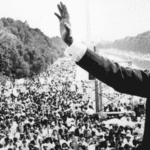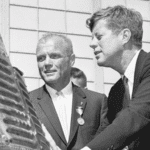The period leading up to Julius Caesar’s crossing of the Rubicon River in 49 BC was marked by significant political and social upheaval in Rome. The Roman Republic was experiencing profound tensions, primarily driven by power struggles between the Senate and prominent military leaders. Julius Caesar, having enjoyed great military success in Gaul, emerged as a key figure whose growing power was viewed with increasing alarm by the Senate, which sought to maintain its traditional authority.
At the core of these conflicts was the rivalry between Caesar and other prominent leaders, notably Pompey the Great and Crassus. This alliance, known as the First Triumvirate, temporarily masked their competitive ambitions, but following Crassus’s death, the bond between Caesar and Pompey deteriorated. The Senate, now largely aligned with Pompey, aimed to undermine Caesar’s influence, which heightened the stakes for both sides as tensions escalated.
Socially, the Roman populace had begun to shift in its loyalties. Many citizens viewed Caesar as a champion of the lower classes, advocating for reforms that would alleviate their hardships. This support lent him the political muscle to counter the Senate’s efforts to lessen his authority. Consequently, decisions were made that brought the Republic to a precipice. This river served as the critical boundary between the Roman province of Gaul and the Italian peninsula. In the context of Roman governance, the Rubicon was not merely a physical barrier but also a political demarcation that held considerable implications for military leaders and their ambitions. The crossing of the Rubicon represented a daring gamble, symbolizing not just a military advance but a definitive break from the Senate’s control. By leading his army across this river, Caesar effectively declared war on Rome, a point of no return that signified the end of the Republic’s traditional governance.
This historical backdrop underscores the gravity of Caesar’s choice to cross the Rubicon, framing it as a pivotal moment that would irrevocably alter the course of Roman history, bringing forth an era of civil strife and ultimately the rise of imperial rule.
The Phrase ‘Alea Iacta Est’ and Its Significance
The phrase “Alea Iacta Est,” which translates to “the die is cast,” was famously uttered by Julius Caesar as he crossed the Rubicon River in 49 BCE. This moment signified a pivotal turning point not just in Caesar’s life but also in Roman history as a whole. By declaring this statement, Caesar acknowledged the gravity of his decision to march on Rome, an act that violated Roman law and sparked a civil war. The phrase encapsulates the essence of decisive action, where the outcome becomes dependent on factors beyond one’s control, much like a roll of dice in a game.
From a philosophical standpoint, the phrase highlights the inevitability of fate and the weight of choices made. In the context of crossing the Rubicon, it reveals the commitment Caesar made to his cause, locking himself into a path from which there was no turning back. This act can be interpreted as a metaphor for the human condition itself—a nuanced depiction of the relationships between fate and free will in decision-making. By using this phrase, Caesar not only acknowledged the risks involved but also embraced the consequences of his actions. His proclamation turned into a symbol representing the courage required to pursue one’s goals, no matter how formidable the challenges may be.
Aftermath of the Crossing: Consequences and Impacts
The decision taken by Julius Caesar to cross the Rubicon River on January 10, 49 BCE, precipitated a series of profound consequences that not only altered the course of Roman history but also reshaped governance in the broader context of Western civilization. This fateful act initiated a civil war between Caesar and the Roman Senate, effectively leading to a power struggle that would culminate in the downfall of the Roman Republic. The crossing was a deliberate act of defiance against the Senate, implying a commitment to confront those who opposed his leadership.
In the immediate aftermath, Caesar’s forces engaged in various battles against the armies loyal to Pompey, a prominent figure within the Senate. The conflicts quickly escalated, and prominent senators who had once aligned with Caesar found themselves at odds, leading to significant political polarization. Key figures such as Pompey fled Rome, and shortly thereafter, he was defeated in decisive confrontations, ultimately leading to his assassination in Egypt. The vacuum left by Pompey allowed Caesar to solidify his power, as he became the dictator of Rome.
Caesar’s consolidation of power marked a critical turning point in Roman governance. His measures included reforms aimed at stabilizing the economy and addressing the grievances of the lower classes, yet his rule also sparked unease among the elite, who viewed his rise as a threat to the Republic’s traditional structures. This tension culminated in a conspiracy led by individuals such as Brutus, who feared the establishment of a monarchy under Caesar. The repercussions of his crossing of the Rubicon extended far beyond the immediate military actions, eventually leading to his assassination in 44 BCE—an event that precipitated yet another series of civil wars and ultimately the establishment of the Roman Empire.
Thus, the crossing of the Rubicon served as a catalyst for historical transformation, changing not just the immediate political landscape but also the essence of Roman governance for generations to come.
Legacy of the Rubicon: Lessons in Leadership and Decision-Making
The crossing of the Rubicon River by Julius Caesar in 49 BC is often regarded as a defining moment in both Roman history and the evolution of leadership paradigms. This pivotal action epitomizes the courage required to make tough decisions, particularly when faced with significant risks and uncertainties. The phrase “crossing the Rubicon” has since transcended its historical context, serving as a powerful metaphor for taking irrevocable steps toward a desired outcome, whether in leadership, strategic planning, or personal life.
The lessons derived from this historical event resonate strongly in contemporary leadership discussions. Leaders today are often confronted with situations requiring bold decisions. Like Caesar, they must assess the potential consequences of their actions and choose a path that aligns with their vision and values, even when it entails considerable risk. The courage to make such decisions often distinguishes successful leaders from those who falter in times of adversity. This idea underscores the importance of decisive action in effective leadership.
Moreover, the concept of strategic decision-making can also be informed by Caesar’s actions. His choice to cross the Rubicon, despite the inevitable conflict it would engender, illustrates that successful leaders must sometimes prioritize their vision over the status quo. In today’s fast-paced and often unpredictable environments, leaders must evaluate risks thoroughly yet act decisively to navigate their organizations through challenges.
Ultimately, the enduring legacy of the Rubicon serves as a reminder that true leadership requires not only vision but the ability to embrace uncertainty and drive transformative change. These principles extend beyond historical study; they are as applicable to modern leadership and strategic decision-making as they were in Caesar’s time. By understanding these lessons, individuals can better position themselves to make impactful choices in their personal and professional lives.
More Historical Quotes To Inspire You
- The Art Of War Quotes – Sun Tzu
 Introduction to The Art of War The Art of War is an ancient Chinese military treatise attributed to Sun Tzu, a military strategist and philosopher who is believed to have lived during the Eastern Zhou period of ancient China, around the 5th century BCE. This seminal work has transcended its original context and remains highly… Read more: The Art Of War Quotes – Sun Tzu
Introduction to The Art of War The Art of War is an ancient Chinese military treatise attributed to Sun Tzu, a military strategist and philosopher who is believed to have lived during the Eastern Zhou period of ancient China, around the 5th century BCE. This seminal work has transcended its original context and remains highly… Read more: The Art Of War Quotes – Sun Tzu - I Have A Dream – Martin Luther King
 Dr Martin Luther King’s I Have A Dream Speech is rightly recognised as a pivotal moment in The Civil Rights Movement. What is not widely known is that the I Have A Dream section was not in the speech he was meant to give.
Dr Martin Luther King’s I Have A Dream Speech is rightly recognised as a pivotal moment in The Civil Rights Movement. What is not widely known is that the I Have A Dream section was not in the speech he was meant to give. - JFK Famous Quotes
 John F. Kennedy, the 35th President of the United States, served from January 1961 until his untimely death in November 1963. His presidency is often remembered for its significant impact on American society, as well as for the pivotal historical events that unfolded during this period. Kennedy’s leadership style was characterized by a commitment to… Read more: JFK Famous Quotes
John F. Kennedy, the 35th President of the United States, served from January 1961 until his untimely death in November 1963. His presidency is often remembered for its significant impact on American society, as well as for the pivotal historical events that unfolded during this period. Kennedy’s leadership style was characterized by a commitment to… Read more: JFK Famous Quotes - William Shakespeare – Linguistic Genius
 William Shakespeare, often celebrated as the most prominent figures in English literature, made an indelible mark on the evolution of the English language. Born in 1564 amidst the Renaissance, a period of profound change and creativity, he contributed significantly to the literary and linguistic landscape of his time. The English language during Shakespeare’s lifetime was… Read more: William Shakespeare – Linguistic Genius
William Shakespeare, often celebrated as the most prominent figures in English literature, made an indelible mark on the evolution of the English language. Born in 1564 amidst the Renaissance, a period of profound change and creativity, he contributed significantly to the literary and linguistic landscape of his time. The English language during Shakespeare’s lifetime was… Read more: William Shakespeare – Linguistic Genius - Winston Churchill Famous Quotes
 Winston Churchill, a pivotal figure in modern history, is best recognized for his unparalleled roles as a British statesman and military leader. Born on November 30, 1874, at Blenheim Palace, into an aristocratic family, Churchill displayed early signs of fortitude and leadership. His political career spanned over five decades, during which he held numerous governmental… Read more: Winston Churchill Famous Quotes
Winston Churchill, a pivotal figure in modern history, is best recognized for his unparalleled roles as a British statesman and military leader. Born on November 30, 1874, at Blenheim Palace, into an aristocratic family, Churchill displayed early signs of fortitude and leadership. His political career spanned over five decades, during which he held numerous governmental… Read more: Winston Churchill Famous Quotes - Crossing the Rubicon: The Moment That Changed History
 The period leading up to Julius Caesar’s crossing of the Rubicon River in 49 BC was marked by significant political and social upheaval in Rome. The Roman Republic was experiencing profound tensions, primarily driven by power struggles between the Senate and prominent military leaders. Julius Caesar, having enjoyed great military success in Gaul, emerged as… Read more: Crossing the Rubicon: The Moment That Changed History
The period leading up to Julius Caesar’s crossing of the Rubicon River in 49 BC was marked by significant political and social upheaval in Rome. The Roman Republic was experiencing profound tensions, primarily driven by power struggles between the Senate and prominent military leaders. Julius Caesar, having enjoyed great military success in Gaul, emerged as… Read more: Crossing the Rubicon: The Moment That Changed History






